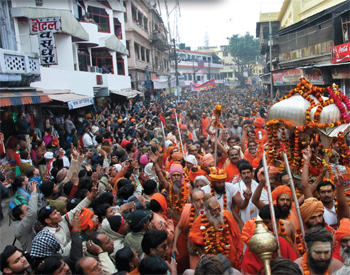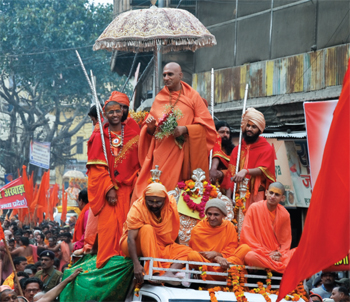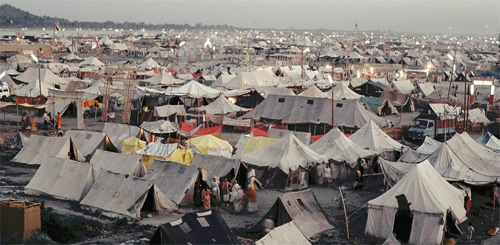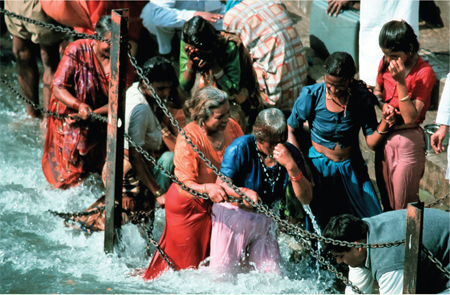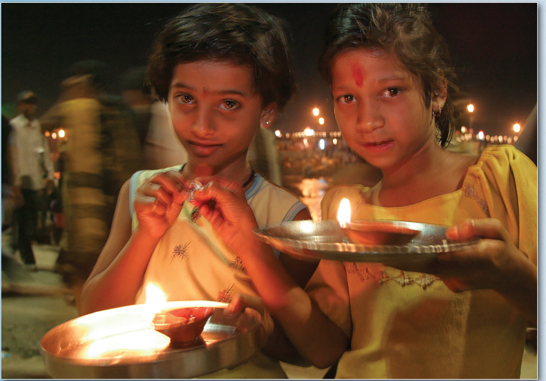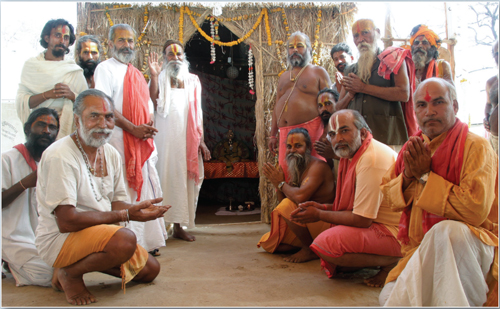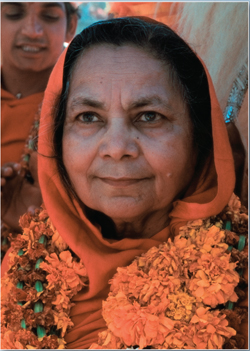The Kumbha Mela brings together tens of thousands of Hindu holy men (sadhus) and women (sadhvis) as well as millions of devout Hindus, all traveling long distances to experience months of worship and festivities.§
Hindu monks parade through narrow streets of Haridwar on their way to the river Ganga for a sacred, purifying bath.§
Swami Avdheshanand Giri, under the umbrella, heads a monastic order of hundreds of thousands of sadhus.§
During the festival, a vast tent city is set up along the river to house the sadhus. Here, devotees can meet and mingle with these holy monks, many of whom live alone in remote areas of the Himalayas.§
All devotees eagerly immerse themselves three times in the sacred water. They hold on to steel chains to avoid slipping into the swift-flowing river.§
Two girls hold clay oil lamps on metal trays at the 2004 Kumbha Mela in Ujjain, one of Hinduism’s “Seven Sacred Cities.” These lamps will be used in the worship of the Kshipra River flowing behind them. Hindus often attend the Mela in large family groups composed of kids, parents, aunts, uncles, cousins and grandparents. There is something for everyone in the traditional worship and festive ceremonies.§
Leaders gather for a summit during the 2004 Mela at Ujjain to discuss philosophy and current Hindu issues. At the 1974 Kumbha Mela, Ma Yoga Shakti was named a Maha Mandaleshwar, chief religious leader, one of the first women given this high honor in modern times.§
- Explain: Why do you think the Kumbha Mela attracts so many Hindus?
- Discuss: In religions other than Hinduism, how do children and youth participate in festivals?
- Explain: Why is bathing part of the religious ritual at the Mela? What parallels do you see in Christian baptism and Muslim washing before prayers?
- Discuss: If you were at the Kumbha Mela, what questions would you ask the Hindu leaders at one of their summits?

